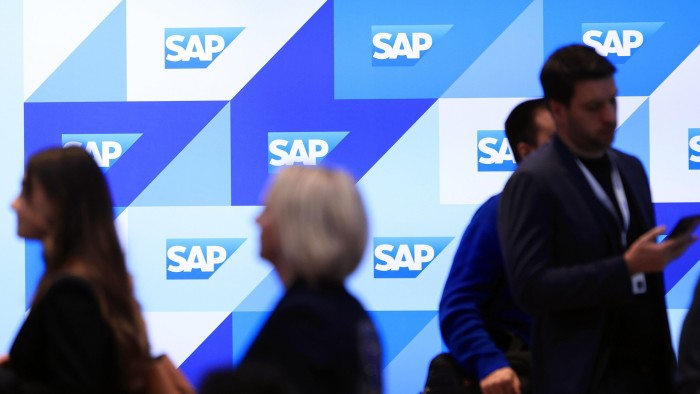Unlock the Editor’s Digest for free
Roula Khalaf, Editor of the FT, selects her favourite stories in this weekly newsletter.
Deglobalisation is one response to tariffs. Dematerialisation is savvier. We are already replacing physical things with intangibles: streaming rather than buying DVDs; kids playing Roblox instead of amassing dolls. Getting a virtual update, whether for phones or cars, beats buying new ones.
Delivery over the internet rather than by ship also means that US President Donald Trump’s “liberation day” tariffs do not apply — at least insofar as anything is certain.
That makes Germany’s SAP, recently elbowing aside Novo Nordisk to become Europe’s most valuable company, a relatively defensive bet. Like its peers, it can boast high recurring revenues. SAP is targeting operating profit growth of between 26 and 30 per cent this year.
Still, no one has Teflon immunity. Slower economic growth (assuming there still is some) stunts demand. Software may not be the first item straitened industrial clients will want to cut. But, over time, merchants’ fortunes will trace those of the sectors they serve. Dassault Systèmes of France, Capgemini and Sweden-based Hexagon, with a heavier reliance on automakers, will probably have a bigger second-order impact. Cadence and Synopsis, more focused on semiconductors that have a reprieve (for now), may benefit from their must-have design software.
Beyond software, one possible beneficiary of a tariff-heavy world is 3D printing, or additive manufacturing. Even the immutably physical — from prosthetics to 100-foot tall rockets — can begin life as a coded blueprint zapped over the line to a printer, which then builds it up layer by layer.
BAE Systems is using 3D printing in building combat aircraft Tempest while Dubai aims for a quarter of its buildings to be built this way by 2030.
Additive manufacturing has had a slower take-off than gung-ho pundits predicted in the earlier noughties. Economist Jeremy Rifkin reckons tariffs could make this its moment. There are several advantages: costs have fallen, customisation is easier and components can be on site in moments, an attraction for companies such as oil and gas major Shell, which is using 3D printing to print spare parts on demand. Airbus is also using a 3D printed injector head for its Ariane programme. That has allowed it to reduce the previous 248 parts down to just one.
Hold-ups in the past have been pinned on limited capacity, across printers themselves and the materials used to build up the blueprints. Smaller customers, lacking the staffing of defence primes, are more reliant on printer makers for customisation and technical expertise. Yet, in this era of extra charges for shipping physical goods, intangibles may well make material headway.




